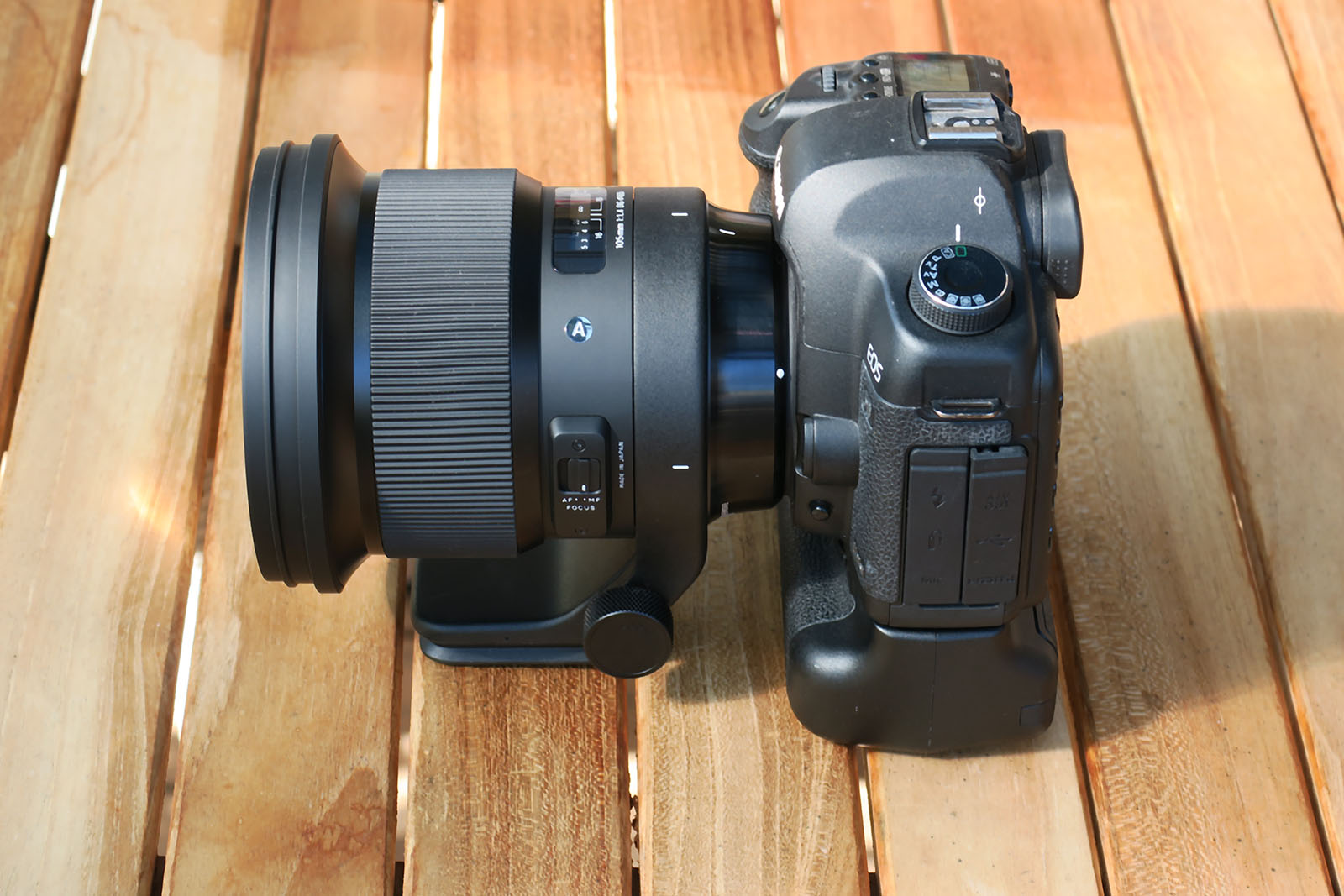
Sigma Art Series 105mm F1.4 Test Report

Having had considerable success using Sigma's 50mm F1.4 Art series lens for nightscape photography,
I was keen to try their latest Art series offering, the Sigma 105mm F1.4.
I had been using Canon 85mm LII F1.2 for a number of years,
but found the chromatic aberration made that lens virtually useless for Astrophotography.
It was sold on E-Bay to make way for the new Sigma.
The lens arrived from CR Kennedy Australia, nicely boxed and is supplied with a soft lens case, lens hood, strap and photo-tripod foot.
To quote Sigma: "Instead of conventional ABS plastic, the exclusive lens hood features CFRP (carbon fibre reinforced plastic),
a light but strong material used in the interior and exterior fittings of aircraft, among many other applications.
The removable Arca-Swiss tripod socket is compatible with Arca-Swiss platform and clamps,
and its exclusive protective cover makes the lens easier to carry and use when shooting hand-held" All true enough.
This lens is heavy weighing in at 1.6Kg.I call it the Wombat. Nuggetty, short, strong and heavy.
Autofocus is fast and accurate, though oddly failed to function with my full spectrum Canon 5DMKII with internal UV/IR block filter in place.
While Sigma quote a 105mm filter size, the actual objective diameter is 90mm, or about the same as a small wide field refractor telescope.
Unlike daylight photographers, where evenly illuminated fields of light mask many lens aberrations, astro-photographers tersely test optics
with the expectation that stars will look like symmetrical points of light across the entire field.
Many photographic lenses give asymmetric blobs, sometimes resembling multicoloured seagulls or mini comets,
particularly toward the edge of frame where any lens coma, astigmatism, chromatic aberration and spherical errors become obvious.
So how does the Sigma 105mm F1.4 perform?
Above: Canon 5D MkIV, 10 seconds, ISO 1600 Sigma Art 105mm @ 1.4
Above: Centre and Edge close-ups. Canon 5D MkIV, 10 seconds, ISO 1600 Sigma Art 105mm @ 1.4
Note the decidedly brighter centre section.
Above: Sigma 105mm F1.4 Vignetting at F1.4
Vignetting at F1.4 is significant, more than 1 f-stop at the edges. To use this lens wide open you will need flat fields,
as RAW lens corrections in software didn't quite cut it. There is also noticeable coma at the edges of a 35mm frame
but APS camera users will likely see little to none. At F2.0 stars looks well formed at the edges and
by F2.8 stellar footprints are pristine across the entire frame.
Above: Centre and Edge close-ups. Canon 5D MkIV, 10 seconds, ISO 1600 Sigma Art 105mm @ F 2.0
The BIG winner for me with this lens was the lack of Chromatic Aberration.
At F1.4 there is a tad in the corners,
but at F2.0 the images are remarkably clean.
This lens puts my former Canon 85mm f1.2 LII series to shame optically and has a RRP close to $500 less expensive.
Is this the best short-telephoto astro-photography centric lens ever?
Well, close but no cigar
Below are examples of the decidely more expensive Canon L-Series 200mm F2.0, shot wide open
Above: Canon 5D MkIV, 30 seconds, ISO 1600 Canon 200mm F2.0
Above: Centre and Edge close-up Canon 5D MkIV, 30 seconds, ISO 1600 Canon 200mm F2.0
Sure the Canon's perfromance is virtually flawless, but at around $A7500 you'd expect this level of performance.
At $A2200 the Sigma is simply remarkable value for money and should be high on any Astrophographer's "must have" list.
All Images taken from the heavily light polluted skies of southern Sydney, NSW Australia.
Text and Images copyright Peter J Ward 2018

Can you see all 26 grey scales above?